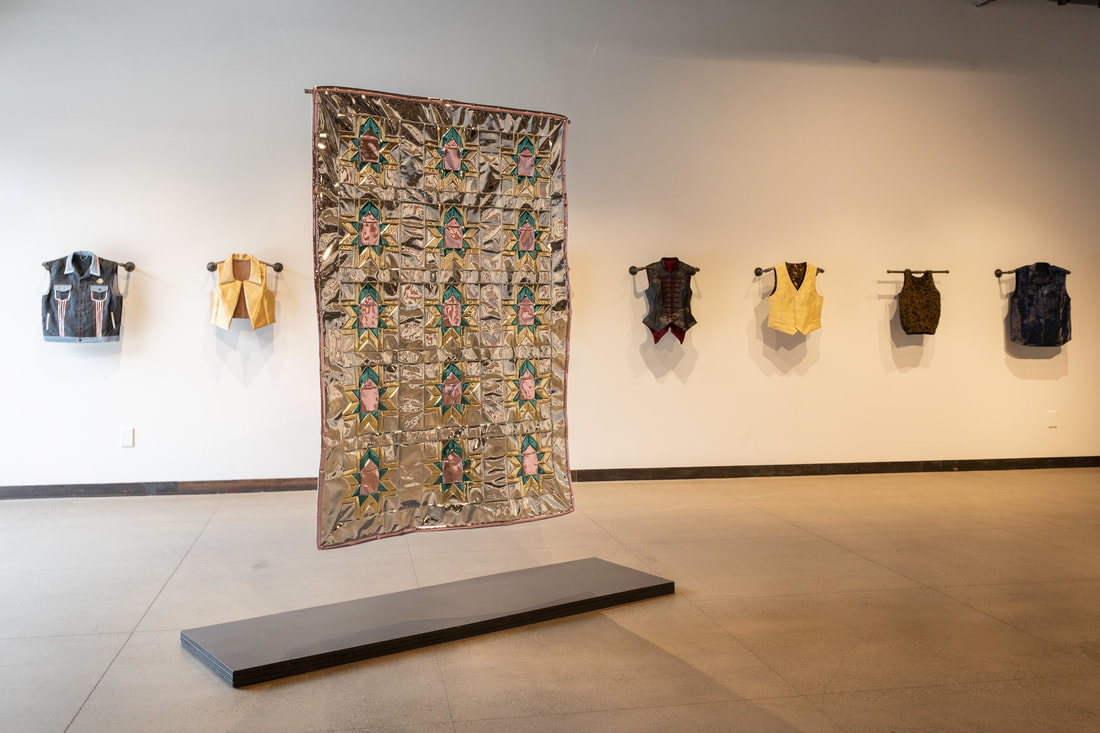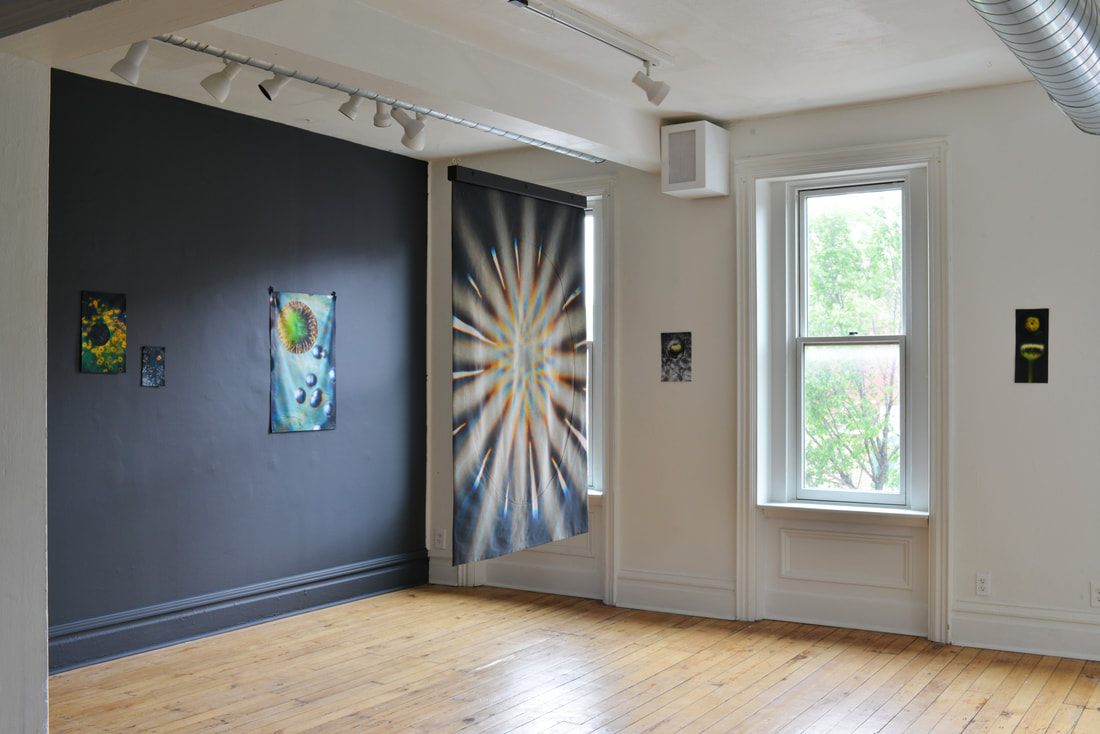Rumination on the work of Naomi Chambers by Chenoa Baker
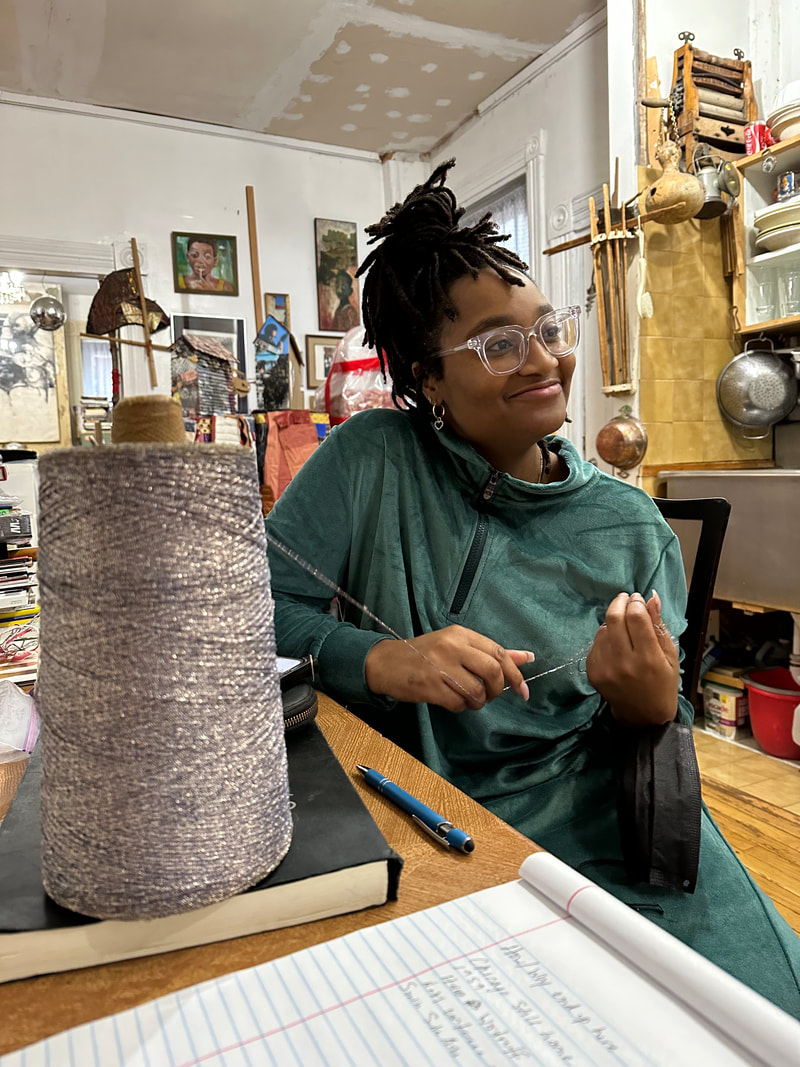
Naomi Chambers at Napoleon Jones-Henderson’s studio, 2023
9/18/23
The views and opinions expressed in this article are solely those of the author. They do not reflect the opinions or views of Bunker Projects or its members. All images courtesy of Christine O’Donnell unless otherwise indicated
Your values, happiness, and the things the people around you need, are the things by which you should steer your life ― Sheila Heti, Motherhoodd
Many Black women breathe life into communities as artists and innovators, in overlooked and unconventional ways. “Food’s on the table” was a whispered I love you after a night of discipline; holding you and rubbing Vicks on your chest evoked care. It was a nonverbal I am here for you. The creative ways that Black mamas, aunties, grandma and ‘em, and fictive kin, navigate and turn a system of scarcity into love and abundance is pure magic.
Pittsburgh-based artist Naomi Chambers is one of these women. She is a painter, sculptor, installation, and social practice artist currently residing in Pittsburgh’s historic Hill District. Chambers’ two collaborators, cheerleaders, and divine creations are Dendi and Dodi. They are ages three and six (the same age difference of my younger brother and I). Chambers is their maternal guide and through their child-like wonder, they also guide her. Watching them play with their toys and open new worlds of imagination inspires Chambers. Since Dendi loves kitchen play sets, Chambers often uses that visual language and times of gathering around food to communicate the strength in community and valuable lessons. The year that Dodi wanted a tea party for her birthday, Chambers’ work for the Mattress Factory, incorporating tea sets, was born.

Naomi Chambers, Mommies vs. Aunties
(2022), installation view at the Mattress Factory. Photo by Tom Little.
What I love about Chambers is she doesn’t dim her inner child but allows herself to see through the eyes of her children, uses play as a mechanism for exploration, and leans into pop cultural icons marketed to kids. Also, she is one of the rare few who practices what she preaches. Instead of whoppins and the children-can-be-seen-and-not-heard tactic, she treats her kids as autonomous individuals, explains why the rules are rules, and allows them to grow into their own natural personalities. The way she nurtures her children confirms that mothering is her greatest creative artform. Sarah Rafson, a mother of two who runs Point Line Projects and teaches in the Carnegie Mellon Architecture Department, affirmed this when we met at Bantha Tea; as soon as I mentioned Chambers’ name, Rafson was quick to acknowledge that she is one of the few who really knows how to balance being a visual artist and a mother, and she often brings her kids to art events, keeps them engaged in her work, and seamlessly brings them on as collaborators.
In 2017, Chambers worked with a collective of artists to open FlowerHouse, a community art studio and creative space in Wilkinsburg that offered workshops for predominantly Black residents of Pittsburgh. In 2018, she had her first solo exhibition, Communal Futures at the August Wilson African American Cultural Center. Her work at The Mattress Factory, Black Community Survival Conference Tea Party Ice Cream Social Moonlit Cinema, gifted a visual language for strengthening, unifying, and reimagining Black communities. In that piece in particular, arrangements of paintings and plastic tea sets reminded us that gathering is a crucial step towards liberation. All of these alternative venues and socially engaged projects became prototypes for her future inquiries.
As a self-proclaimed maximalist and proud mother, her work is a form of storytelling through research, pastel-painted elements, rhinestone bedazzling, and found objects. She is currently a Community Liaison with Alisha Wormsley’s Sibyls Shrine, a residency for creative mamas. Chambers uplifts how a Black woman, and more importantly, a Black mother may envision community affirmation through public art. Her identity as a mother is important to her art because of the nurturance and resourcefulness of Black mothers who dare to raise Black children in a white supremacist society. When Chambers had Dendi, her son, she experienced a severe threat to her well-being which drew on the intersection of race, gender, and healthcare inequity. While the specifics are vulnerable for her to go into, I can imagine the many near-death experiences of pregnant Black women because often health systems do not value nor recognize pain in Black patients, especially mothers. My mother was one of them. She had an ectopic pregnancy when I was in first grade. An abortion literally saved her life, as a liter of blood was in her abdomen. Chambers now dedicates herself to the service of Black mothers; she finds fulfillment in volunteering for postpartum mom support groups and making work accessible to children and adults, to prompt conversations around community and physical and social-emotional public healing.
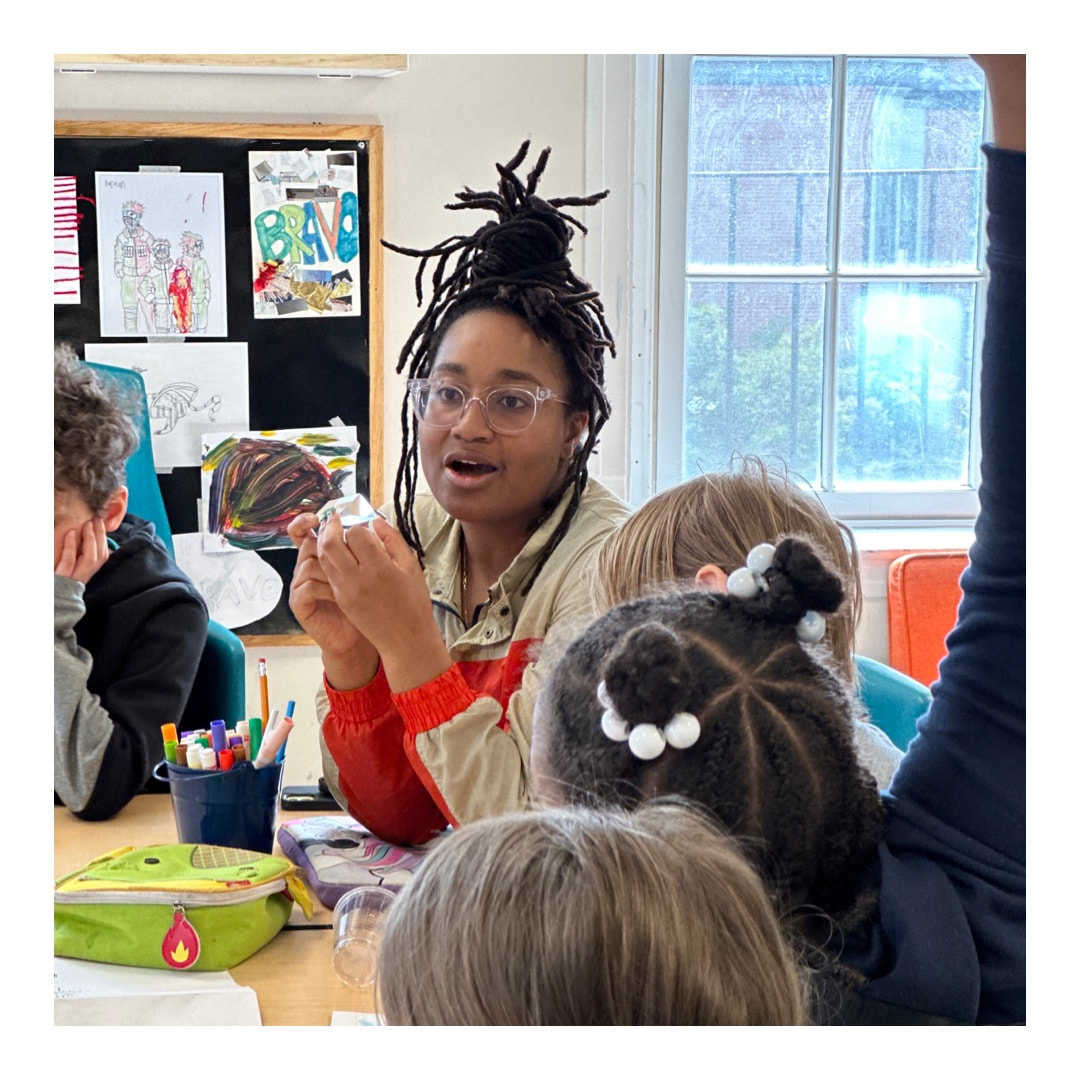
Naomi Chambers with USES kids, 2023
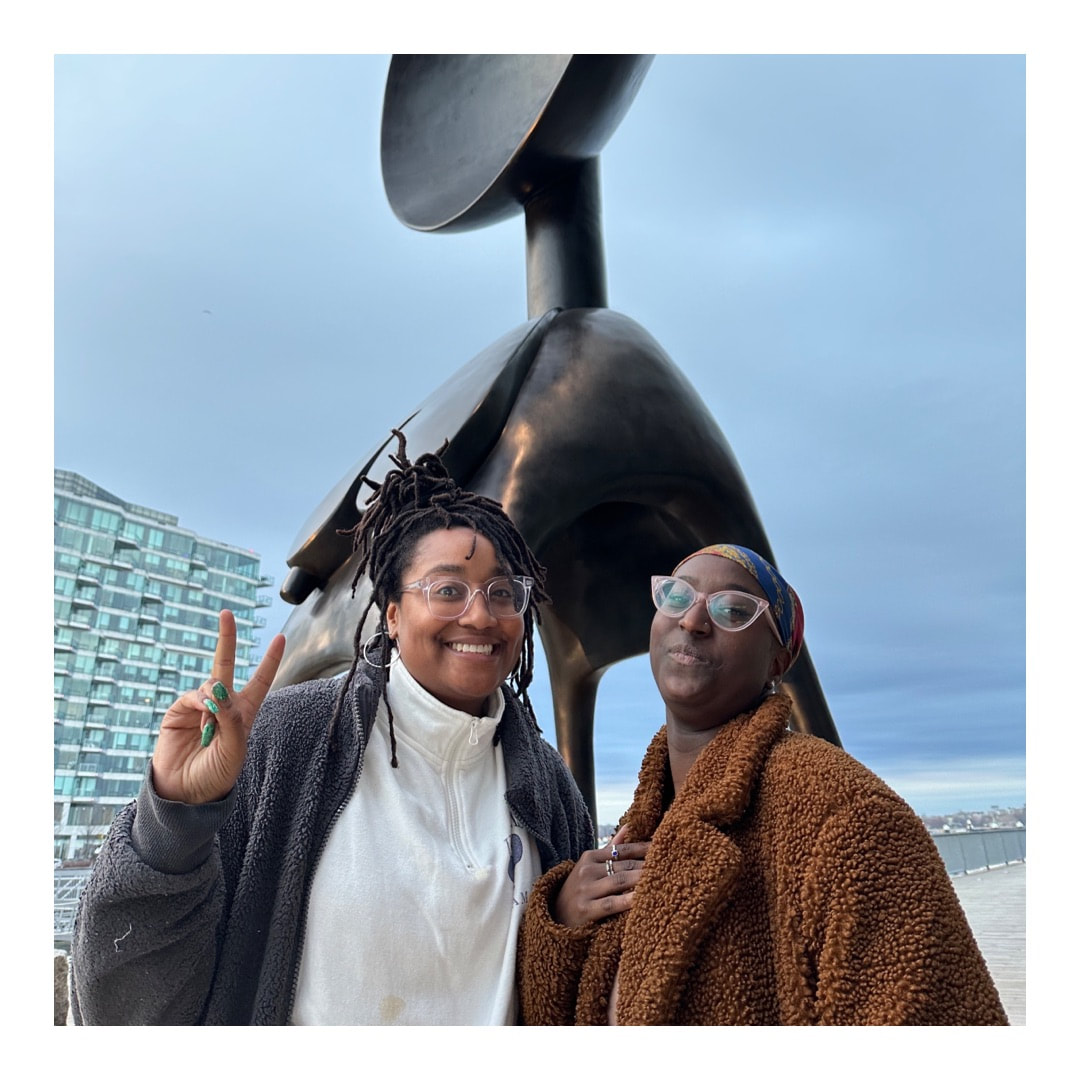
Naomi Chambers and Jamelah Platt, 2023
Inspired by her work, Boston’s Beacon Gallery and I built a micro-residency designed specifically for Chambers, which she is two-thirds of the way through. Chambers will spend time in Boston for three non-consecutive weeks. The residency mobilizes the concepts of marronage and self-sufficiency. As a through-line, Chambers asked questions about how the Boston Black community has been able to thrive and ways that they have created their own sustainable structures.
The idea for a residency about self-realization and freedom began with her mentioning a trip to Ikea where she saw small little houses for sale prompted the question: what does an uninterrupted Black community look like? She cites books like Color of Law: A Forgotten History of How Our Government Segregated America by Richard Rothstein, grassroots initiatives of the Black Panther Party For Self Defense, and a new source that I shared with her about Soul City, a US government-funded attempt to create an independent Black community. All of these historical works formulate her utopian and Afrofuturistic thinking.
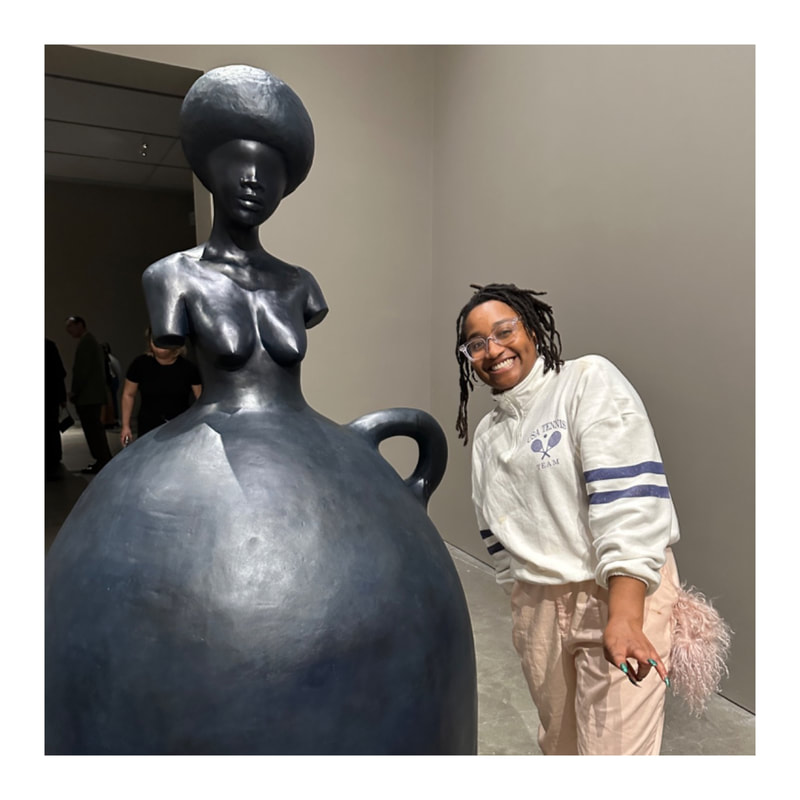
Naomi Chambers at ICA Boston, 2023
When Thomas More coined the idea of “utopia,” in 1516, it was formulated as a paradise written by and for white men. Chambers rewrites her own story for us and by us. During Chambers’ research, supporting her and her kid and collaborative programming were priorities. For instance, when Chambers and her cousin Mimi (Jamelah Platt) saw the Simone Leigh exhibition at the Institute of Contemporary Art, Boston, the gallery paid for a babysitter so that she was able to network the vast convening of Black Feminist artists, curators, and scholars. Healing for others can only work if your own cup is filled, and we made provisions for that at the gallery.
With healing through public art being the charge, Chambers conducted in-person and archival research through site visits to the city with artist Paul Goodnight; Napoleon Jones-Henderson (a member of AfriCOBRA whom she calls Baba Nap); multidisciplinary artist and Roxbury resident Stephen Hamilton; President of the New Commonwealth Racial Equity and Social Justice Fund Makeeba Mccreary; Imari Paris Jeffries, President and CEO of Embrace Boston, and many other connections. Through meeting several artists and administrators, she asked what community offering they would benefit most from.
Naturally, because she channels her creative children through her art, it was no surprise that she decided to work with a group of kids at United South End Settlements (USES), an organization in the same neighborhood of Beacon Gallery improving the lives of the poor through education, childcare programs, summer camps, and job preparedness. While Beacon Gallery hosted the residency, I really wanted an organic creative placemaking project to emerge, and Chambers created just that.
The soft sculpture of Harriet Tubman, called Let My People Go, by artist Barbara Ward, at the entrance of USES, beckoned to Chambers as a place of artwork partnership. Chambers has a kinship with Tubman because they share the same birthday, so she has always looked to her as a foremother. Not only is Tubman an icon of self-emancipation but USES is at the previous site for the Harriet Tubman Society, an African American settlement organization to provide support for the economic mobility of Black women.
Creative placemaking/placekeeping honors the indigeneity of a place instead of disrupting it. Residencies are often a model of short-term, extractive meetings with people to support a project or research of a resident. However, this residency is three non-consecutive weeks in residence. Chambers, who has family in the South End neighborhood where the gallery is located, has cross-pollinated with residents of Boston, we both established long term connectivity to make this residency possible.
The lens of motherhood provides Chambers with a unique, enchanted-yet-critical view of the world and her artwork meets folks where they are no matter their ages or backgrounds. She is a community griot and healer through her art. I can’t wait to see how her proposal develops in Boston.
Chenoa Baker (she/her) is an empathetic curator, wordsmith, and descendant of self-emancipators. Equity and collectivism are the core of her curatorial work. She empowers a range of clientele — individuals, firms, and institutions — to elevate their social impact, publication, and exhibition projects. In addition to her role as Associate Curator at Beacon Gallery, she has worked on shows at various institutions: Gio Swaby: Fresh Up at the Peabody Essex Museum; Simone Leigh at ICA/Boston; Simone Leigh: Sovereignty at the 59th La Biennale di Venezia; and Touching Roots: Black Ancestral Legacies in the Americas at MFA/Boston. Her autobiographical-style art criticism appears in Public Parking, Material Intelligence, Studio Potter, Boston Art Review, Sixty Inches From Center, Helena Metaferia: Generations, Art For This Moment, and Burnaway, among others.
